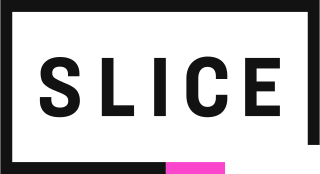
The Global Television Network is a Canadian English-language terrestrial television network. It is currently Canada's second most-watched private terrestrial television network after CTV, and has fifteen owned-and-operated stations throughout the country. Global is owned by Corus Entertainment — the media holdings of JR Shaw and other members of his family.
BBC Canada was a Canadian English language specialty channel that mostly broadcast television series originally produced by the BBC, the public-service broadcaster of the United Kingdom. The channel was owned by Corus Entertainment and BBC Studios (20%).

YTV is a Canadian English language discretionary specialty channel owned by YTV Canada, Inc., a subsidiary of Corus Entertainment. The channel and its programming is targeted at children and young teenagers; consisting of both original live-action and animated television series, movies, and third-party shows from various U.S.-based kids networks such as Nickelodeon. Its name was originally thought to be an abbreviation for "Youth Television", though the channel's website has denied this.

Corus Entertainment Inc. is a Canadian mass media company. The company was founded in 1987 as Shaw Radio, Ltd. as a subsidiary of Shaw Communications and was spun-off from Shaw in 1999. It has prominent holdings in the radio, publishing, and television industries. Corus is headquartered at Corus Quay in Toronto, Ontario.

FYI was a former Canadian English language specialty channel owned by Discovery Health Canada, ULC, a subsidiary of Corus Entertainment. Based on the American cable network of the same name, the channel features lifestyle programming, with a mix of reality, culinary, home renovation and makeover series.

Family Channel is a Canadian English-language discretionary specialty channel owned by WildBrain. The network primarily airs children's television series, teen dramas, as well as other programming targeting a family audience. Despite having its own headquarters in the Brookfield Place office in Financial District, the channel is transmitted from Corus Quay.

Oprah Winfrey Network, more commonly shortened to OWN, is a Canadian English language discretionary service channel owned by Corus Entertainment. The channel was launched in September 1, 1999 as Canadian Learning Television (CLT) by Learning and Skills Television of Alberta, Ltd., then held by CHUM Limited. The network's owner, Corus Entertainment, licenses the OWN brand and its American programming from Warner Bros. Discovery.

The History Channel is a Canadian English-language discretionary specialty channel that primarily broadcasts programming related to history and historical fiction. It is owned by History Television, Inc., a subsidiary of Corus Entertainment.

Slice is a Canadian English language discretionary service channel owned by Corus Entertainment. The channel primarily broadcasts reality shows targeting young adult women, typically dealing in subjects such as fashion and lifestyles.

Movie Central was a Canadian English language Category A premium cable and satellite television channel that was owned by Corus Entertainment. Movie Central was designated to operate west of the Ontario-Manitoba border, including the territories. Although the channel's name implies that it focuses solely on theatrically released motion pictures, Movie Central's programming included original and foreign television series, made-for-cable movies and documentaries.

A&E Networks is an American multinational broadcasting company that is a 50–50 joint venture between Hearst Communications and The Walt Disney Company through its General Entertainment Content division. The company owns several non-fiction and entertainment-based television brands, including its namesake A&E, History, Lifetime, FYI, and their associated sister channels, and holds stakes in or licenses their international branches.

HGTV is a Canadian English-language discretionary cable and satellite specialty channel owned as a joint venture between Corus Entertainment and Warner Bros. Discovery. HGTV broadcasts programs relating to real estate, home and garden design, and renovations.

IFC was a Canadian English language specialty channel. The channel was owned by Corus Entertainment. The channel broadcast independent films, documentaries, and television series. Its name was licensed from the American company AMC Networks, the owner of IFC. The channel ceased operations on September 30, 2019.
Dusk was a Canadian English language specialty channel. Dusk broadcast programming consisting of films, television dramas, and reality TV, and documentary-style television series from the thriller, suspense and supernatural genres.

Magnolia Network is a Canadian English language discretionary specialty channel that broadcasts lifestyle programming related to home design, renovations, and food. The channel's brand and much of its foreign programming is licensed from its American namesake, Magnolia Network. The channel is a joint venture between HGTV Canada Inc., a subsidiary of Corus Entertainment and Warner Bros. Discovery.

ABC Spark is a Canadian English-language discretionary specialty channel owned by Corus Entertainment. The channel was launched on March 26, 2012, replacing the declining channel Dusk.

Boomerang is a Canadian English language discretionary specialty channel owned by Corus Entertainment. It is a licensed version of the U.S. channel of the same name, which primarily broadcasts animated programming from the Warner Bros. Animation library, including Warner Bros. Cartoons and Hanna-Barbera productions among others, as well as contemporary reboots of classic franchises. The channel also occasionally broadcasts reruns of Cartoon Network original series.
Adult Swim is a Canadian English language discretionary specialty channel owned by Showcase Television, Inc., a subsidiary of Corus Entertainment. The channel primarily airs animated and live-action comedies targeting a teenage and young adult audience.

Disney Channel is a Canadian English language discretionary specialty channel owned by 9329994 Canada, Inc., a division of Corus Entertainment under license from The Walt Disney Company, which began broadcasting on September 1, 2015. It is a localized version of the U.S. basic cable network of the same name, broadcasting live-action and animated programming aimed at children between the ages of 9 and 16.

Disney XD is a Canadian English-language discretionary specialty channel owned by Corus Entertainment which launched on December 1, 2015. It is a localized version of the U.S. network of the same name operated under license from Disney Branded Television, which broadcasts live-action and animated programming aimed at kids between the ages of 6 and 15.




















